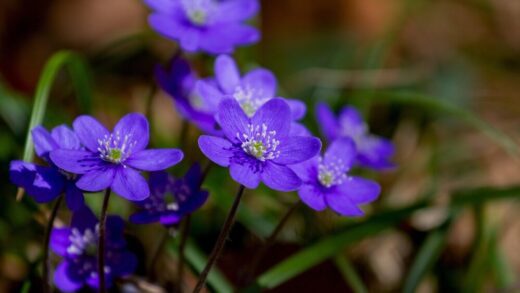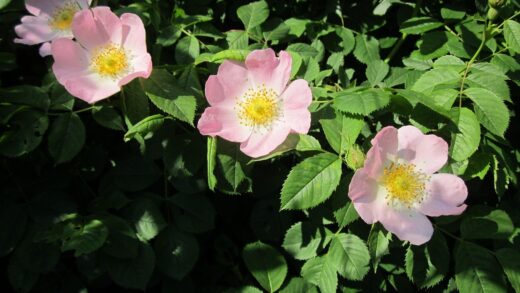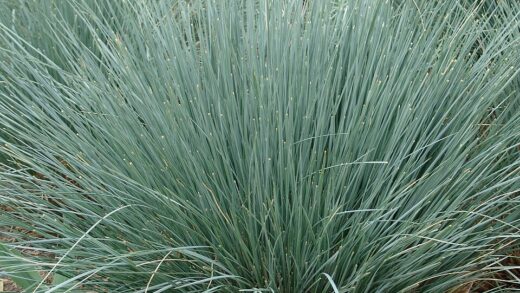While garlic is renowned for its natural pest-repellent properties and is often used in companion planting to protect other vegetables, it is not immune to its own set of diseases and pests. A vigilant grower must be aware of the potential threats that can compromise a crop, turning a promising harvest into a disappointing loss. These issues can range from soil-borne fungal diseases that rot the bulb from within to tiny insects that damage the leaves and reduce the plant’s vitality. Understanding these potential adversaries, recognizing their early symptoms, and implementing integrated pest management strategies are key to maintaining a healthy, productive garlic patch and ensuring the longevity of your soil for future plantings.
The most devastating threats to a garlic crop are often fungal diseases that thrive in cool, moist conditions and can persist in the soil for many years. Diseases like white rot, fusarium basal plate rot, and penicillium decay can cause significant damage, often starting below the soil line where they go unnoticed until the plant begins to show signs of distress above ground. These pathogens can be introduced into a garden through contaminated seed garlic, infected soil on tools, or even water runoff. Once established, they can be incredibly difficult to eradicate, making prevention the most critical line of defence.
Prevention starts with sourcing high-quality, certified disease-free seed garlic from a reputable supplier. This is the single most important step you can take to avoid introducing devastating soil-borne pathogens to your garden. The second pillar of prevention is strict adherence to crop rotation. Garlic and other members of the allium family, such as onions and leeks, should not be planted in the same location more than once every three to four years. This practice helps to break the life cycle of pathogens that may be lingering in the soil.
Beyond these foundational practices, maintaining optimal growing conditions can significantly reduce the risk of disease. This includes ensuring the planting site has excellent drainage to prevent waterlogged soil, spacing plants appropriately to promote good air circulation, and avoiding overhead watering that keeps foliage wet for extended periods. A healthy, vigorous plant growing in a well-managed environment is inherently more resilient and better able to fend off both diseases and pests than a plant that is stressed by poor conditions.
Fungal diseases
White rot, caused by the fungus Sclerotium cepivorum, is arguably the most destructive disease that can affect garlic. The first above-ground symptoms are often a yellowing and wilting of the lower leaves, which can be mistaken for nitrogen deficiency or maturity. However, upon inspection, the base of the bulb and the roots will be covered in a white, fluffy mycelial growth, later interspersed with small, black sclerotia that resemble poppy seeds. These sclerotia are the long-term survival structures of the fungus and can remain viable in the soil for 20 years or more, making future allium cultivation in that spot nearly impossible.
More articles on this topic
Fusarium basal plate rot is another serious soil-borne disease, caused by various Fusarium species. This fungus infects the garlic through the basal plate at the bottom of the bulb, causing the roots to decay and eventually leading to a semi-watery rot of the bulb itself. Above ground, the plant will show symptoms of wilting, yellowing, and dieback. The disease is favoured by warmer soil temperatures and is often a problem that progresses during storage, causing cloves to become soft and brown. There is no cure for fusarium, so prevention through crop rotation and planting in well-drained soil is essential.
Rust (Puccinia allii) is a foliar disease that appears as small, orange to reddish-brown pustules on the leaves and stems of the garlic plant. While it may not kill the plant outright, a severe infection can significantly reduce the photosynthetic area of the leaves. This reduces the plant’s ability to produce energy, which in turn leads to smaller, underdeveloped bulbs. Rust thrives in humid conditions with moderate temperatures and is spread by wind and splashing water. To manage rust, it is crucial to ensure good air circulation through proper spacing and to avoid overhead irrigation.
Penicillium decay, often called “blue mold,” is primarily a post-harvest and storage disease, but the infection can begin in the field, especially if bulbs are bruised or damaged during harvest. It appears as a blue-green, powdery mold growing on the surface of the cloves, which eventually become soft and decayed. Ensuring that garlic is harvested carefully to prevent injury and is cured thoroughly in a well-ventilated location are the best ways to prevent this common storage problem. Proper curing creates a dry outer skin that acts as a protective barrier against the mold spores.
Common pests of garlic
The onion maggot (Delia antiqua) is one of the most damaging insect pests for garlic. The adult fly lays its eggs at the base of the plant, and upon hatching, the small, white maggots burrow down into the soil to feed on the roots and the developing bulb. This feeding damage not only destroys the bulb but also creates entry points for secondary bacterial and fungal infections. The first sign of an infestation is often the wilting and yellowing of the central leaves of the plant. Management strategies include using floating row covers during the fly’s egg-laying period in the spring and practicing strict crop rotation.
More articles on this topic
Thrips, particularly onion thrips (Thrips tabaci), are tiny, slender insects that can cause significant damage to garlic foliage. They feed by piercing the leaf surface and sucking out the cell contents, which results in silvery or whitish patches and streaks on the leaves. A heavy infestation can reduce the plant’s photosynthetic capacity, leading to stress and smaller bulbs. Thrips populations can explode in hot, dry weather. Management includes keeping the garden free of weeds where thrips can shelter and encouraging natural predators like lacewings and minute pirate bugs.
Nematodes, specifically the stem and bulb nematode (Ditylenchus dipsaci), are microscopic roundworms that live in the soil and can infest garlic plants. They feed on the plant tissues, causing stunted and distorted growth, yellowing, and bloating or swelling at the base of the plant. Infested bulbs will feel soft and light, and when cut open, the tissue will appear mealy and begin to decay. These pests are extremely persistent in the soil and are easily spread through contaminated seed stock, soil, and water. The only effective management is strict sanitation and sourcing certified nematode-free seed garlic.
While less common, wireworms can also pose a threat. These are the larval stage of click beetles and they live in the soil, feeding on roots and underground plant parts. They can tunnel directly into garlic cloves and bulbs, creating holes and channels that make the bulb unmarketable and prone to rot. Wireworms are more likely to be a problem in fields that were recently converted from sod or pasture. Tilling the soil in late summer or early autumn can help to expose the larvae to predators and the elements, reducing their numbers.
Integrated pest management (IPM)
Integrated Pest Management (IPM) is a holistic and sustainable approach to managing pests and diseases that prioritizes long-term prevention over chemical intervention. The foundation of IPM in garlic cultivation is built on cultural controls. This includes fundamental practices such as a minimum three-to-four-year crop rotation with non-allium crops, which disrupts the life cycles of soil-borne pathogens and pests. It also involves meticulous site selection to ensure well-draining soil and good sun exposure, creating an environment that is less hospitable to disease.
Another key component of IPM is the use of physical and mechanical controls. For instance, installing floating row covers over the garlic bed in the spring can create a physical barrier that prevents pests like the onion maggot fly and thrips from reaching the plants to lay their eggs. Hand-weeding is a form of mechanical control that eliminates alternative hosts for pests and reduces competition for resources, leading to stronger, more resilient garlic plants. Additionally, removing and destroying any plants that show signs of disease immediately can prevent the pathogen from spreading to the rest of the crop.
Biological control is the practice of using natural enemies to manage pest populations. A healthy garden ecosystem will support a variety of beneficial insects, such as ladybugs, lacewings, and predatory mites, which prey on pests like thrips and aphids. You can encourage these natural allies by planting a diversity of flowering plants that provide them with nectar and pollen. In some cases, specific predatory nematodes can be purchased and introduced into the soil to combat pests like the onion maggot.
Chemical control, particularly the use of synthetic pesticides, is considered a last resort in an IPM framework. If a pest or disease outbreak becomes severe and cannot be managed through other means, a targeted application of the least-toxic pesticide available may be considered. For fungal diseases, preventative applications of organic fungicides based on copper or sulfur might be warranted in areas with a history of disease pressure. For insects, insecticidal soaps or neem oil can be effective while having a lower impact on beneficial organisms than broad-spectrum synthetic insecticides.
Prevention and sanitation
The old adage that “an ounce of prevention is worth a pound of cure” is especially true when it comes to garlic diseases and pests. The single most important preventative measure is to start with clean, certified disease-free seed garlic. Sourcing planting stock from a reputable grower who can guarantee its health is a crucial investment that helps you avoid introducing long-term problems like white rot or nematodes into your soil from the outset. Never plant cloves from supermarket garlic, as their origin and health status are unknown.
Good garden sanitation is another pillar of prevention. This involves keeping the garlic patch free of weeds and plant debris, which can harbor pests and fungal spores. After harvest, it is essential to remove all garlic plant residues from the field rather than tilling them back into the soil. This CROP sanitation practice removes any potential inoculum that could overwinter and infect the next crop. Additionally, cleaning soil from tools, boots, and equipment before moving between different garden areas can prevent the mechanical spread of soil-borne pathogens.
Crop rotation is a non-negotiable preventative strategy for any serious garlic grower. Because many of the most devastating diseases and pests are specific to the allium family, planting garlic or onions in the same spot year after year allows their populations to build up to damaging levels in the soil. By rotating to a different plant family for at least three years, you deprive these specific pathogens and pests of their host, causing their populations to decline naturally. This is one of the most effective long-term strategies for maintaining soil health.
Finally, promoting overall plant health is a key preventative tactic. A plant that is growing in fertile, well-drained soil with adequate water, nutrients, and sunlight will be vigorous and better able to withstand pressure from pests and diseases. Stressed plants, on the other hand, are much more susceptible. By focusing on creating the ideal growing environment through good soil preparation, proper spacing, and appropriate irrigation, you are fundamentally strengthening your crop’s natural defences against potential threats.


















